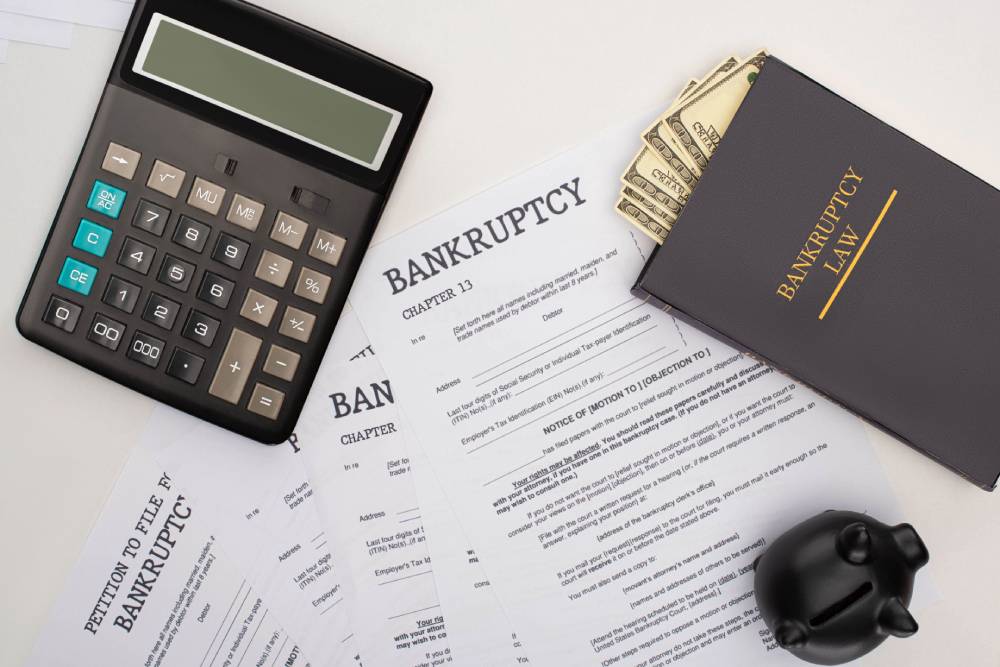We're here to help you.
833-779-9993

Bankruptcy filings are on the rise, particularly in the corporate world, with thousands of businesses forced to seek debt relief each year. In 2024 alone, over 3,000 companies have filed for bankruptcy, a clear indication of ongoing financial strain across multiple industries.
While the reasons behind these filings vary, the most common drivers include declining sales, increasing debt burdens, and the inability to adapt to market changes. Understanding these bankruptcies can help businesses manage financial hardships and clarify the processes of debt resolution and bankruptcy protection.
Recent bankruptcies have exposed the vulnerabilities within various industries, with companies across the board seeking bankruptcy protection. This surge in filings raises important questions about the stability of businesses in today’s economic environment.
Factors such as shifting consumer preferences, supply chain disruptions, and rising interest rates have placed significant pressure on companies to either restructure or liquidate. Understanding these elements can help business owners, investors, and employees prepare for potential financial challenges.
Key Drivers Behind Recent Bankruptcies
The most notable bankruptcies in recent years can often be traced back to a combination of external and internal factors. Economic conditions, such as rising inflation and increased borrowing costs, play a significant role in squeezing businesses’ cash flows.
Additionally, companies that fail to innovate or keep up with changing market demands are more likely to experience financial difficulties. For example, businesses that once thrived in a brick-and-mortar retail environment may struggle as consumers shift to e-commerce, forcing them to seek bankruptcy protection or undergo financial restructuring.
Declining consumer spending also contributes significantly to bankruptcy filings. As individuals tighten their budgets, businesses that rely heavily on discretionary spending feel the pinch. Companies that failed to adjust to the shifting consumer landscape are now facing the consequences.
In some cases, businesses have been unable to recover from declining sales, leading to Chapter 7 or Chapter 11 filings, depending on the nature of their debts and business model.
Chapter 11 vs. Chapter 7: Bankruptcy Types
Not all bankruptcies are created equal. The two most common types of bankruptcy filings for businesses are Chapter 11 and Chapter 7. Chapter 11 bankruptcy, often referred to as “reorganization” bankruptcy, allows companies to continue operating while restructuring their debts. This process enables businesses to negotiate with creditors and create a plan for repayment, which can give a path forward for recovery.
On the other hand, Chapter 7 bankruptcy typically marks the end of a business’s operations. Under Chapter 7, a company’s assets are liquidated, and the proceeds are used to pay off creditors. Once the assets are sold, the business is dissolved. While Chapter 7 filings are often associated with failure, some companies may still choose this route when restructuring is not an option. The decision between Chapter 7 and Chapter 11 bankruptcy depends on the financial health of the company and the willingness of creditors to work with the business on a repayment plan.
Impact of Rising Interest Rates on Business Bankruptcy
In recent years, the Federal Reserve’s interest rate hikes have made borrowing more expensive for businesses, adding to the pressure already placed on companies with existing debts. For businesses that rely on loans to fund operations or expansion, rising interest rates can significantly increase debt payments. Many companies that were already struggling to maintain profitability may find themselves unable to meet their financial obligations, leading them to file for bankruptcy protection.
Higher interest rates also affect consumer spending, which in turn impacts businesses that depend on consumer demand. As interest rates rise, consumers are less likely to make big-ticket purchases, which can reduce sales for companies in industries such as retail and manufacturing. The combination of reduced consumer spending and increased borrowing costs has led to an increase in bankruptcy filings, especially among companies with high debt levels.
Industry-Specific Bankruptcy Trends
Certain industries are more prone to bankruptcy filings due to their inherent business challenges. For example, the retail industry has been hit hard by the rise of e-commerce and the decline of traditional brick-and-mortar shopping.
Companies that have failed to invest in their digital presence or adapt to shifting consumer preferences are at higher risk of bankruptcy. Iconic retail brands such as Toys “R” Us and Sears have filed for bankruptcy in recent years, demonstrating the challenges faced by traditional retailers in today’s market.
The energy sector has also experienced its share of bankruptcy filings, particularly in the wake of fluctuating oil prices and the transition to renewable energy sources. Companies that were heavily invested in fossil fuels have been struggling to maintain profitability as demand for cleaner energy alternatives grows. As a result, these companies have filed for bankruptcy protection in an effort to reorganize and adapt to the changing market dynamics.
How Bankruptcy Protection Helps Struggling Businesses
Bankruptcy protection is a powerful tool that helps businesses handle financial distress. By filing for bankruptcy, businesses can stop collection activities, protect their assets, and develop a plan to repay creditors. Bankruptcy also offers businesses a chance to restructure and emerge from financial turmoil with a fresh start.
Chapter 11 bankruptcy, in particular, allows businesses to continue operations while reorganizing their debts. This process can be especially beneficial for companies that want to avoid the liquidation process and remain operational. By negotiating with creditors and restructuring their debts, businesses can maintain control of their operations and work towards long-term sustainability. Bankruptcy protection can be a lifeline for struggling businesses, offering a structured path towards recovery.
How The Debt Defenders Can Help
At The Debt Defenders, we understand how overwhelming debt and financial struggles can be. Our team is here to help you resolve your debts, protect your rights, and rebuild your credit.
With years of experience in bankruptcy protection and debt resolution, we offer tailored solutions to help individuals and businesses regain control of their financial futures. Contact us today to see how we can guide you through the bankruptcy process with confidence and compassion.

